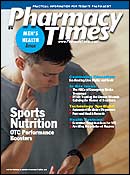Publication
Article
Pharmacy Times
Compounding Hotline
Author(s):
Mr. Erickson is director of professional affairs at Gallipot Inc.

Our pharmacy supplies capsules for a clinical study. We noticed empty gelatin capsules vary in weight and are concerned that filled capsule weights will vary by as much as 15% because of this.

?The capsule dose form is extremely versatile. It was invented by a French pharmacist, Mothes, in 1833. The hard, 2-piece gelatin capsule was patented by Murdock in 1848. Although much research has led to the development of capsules composed of other materials, the chief component remains gelatin, the original material. Today, most gelatin capsules are made from a mixture of sugar, water, and gelatin and sometimes include a preservative (0.15% sulfur dioxide); finished hard gelatin capsules contain about 9% to 12% water. This weight variation is further affected by storage conditions: if humidity is extremely low, the capsule will weigh less and will become brittle in a relatively short time.
Generally, capsule weight variations do not greatly affect the experimental parameters in a clinical study, for clinical studies generally seek to predict "real world" interactions of subjects humans and drug formulations. The necessary analytical chemistry and related studies should have been completed by the time the clinical trial phase is reached in a new drug application process. If the study is not for a New Drug Application, but rather intends to demonstrate a particular set of effects of the interaction for prescribing or other purposes, the same general comment applies. When compounding capsules for clinical studies, particular and careful attention must be paid to average weight and variations, capsule dissolution (shell) and disintegration of contents, assay for active drug(s), organoleptic examination (color, appearance, etc), and physical stability.1
In the same vein, USP/NF specifies "ranges" of assay concentrations, often allowing 97% to 102% or more; the assay is not part of the calculation for the drug. For example, a certificate of analysis may specify a particular lot has assay 99.8% for a drug for which 97% to 102% assay is allowed. When formulating, the drug content is calculated based on an assumption of 100% concentration; specific lot variations are not taken into account, as assay is proof of potency, not strength for administration to the patient. The same reasoning can be applied to capsule weight variations.
Ultimately, it might be argued that the negative ends of the ranges could combine to produce a subpotent capsule. The same argument could be used to support superpotency, however. Therefore, the trials will show biologic and physiologic response to real world capsules. Also, one anticipated complication upon which clinical studies rely is biological variation leading to a range of responses among the subjects?which leads back again to the necessity of compounding accurately and precisely?the compounder's art becomes the transparent vehicle for anticipated variations.
Capsule manufacturing parameters include allowable 10% weight variation among empty hard gelatin capsules. For example, a "0" capsule may weigh 90 mg to 102 mg. It has been reported that a "0" capsule has capacity approximately 0.67 mL. Because tapped bulk densities of powders vary, differing weights of powders can be contained within that space. Approximately 540 mg of acetaminophen, 490 mg of aspirin, or 600 mg of lactose will "fit" in a "0" capsule, for example. If a study drug formulation (active ingredient and excipients) with approximately the same bulk density of lactose were incorporated in a "0" capsule, the final expected weight could be 690 mg to 702 mg.
The compounding pharmacist will engage in a quality control/quality assurance step after completing the process. Allowable variation for compounding is 10%. An excellent discussion of a method appears in International Journal of Pharmaceutical Compounding (IJPC).2 The capsules meet the requirements if "...the weight variation of the active ingredient is within the range of 85% to 115% of label claim and no capsule is outside the range of 75% to 125% of label claim." In our example, a variation in weight of empty gelatin capsule of 10% results in weight variation of the empty capsules of about 10 mg, which represents approximately 1.42% to 1.45% of the theoretical filled weight range of the capsules. Over against the allowable 75% to 125% range, this variation becomes a minor consideration. Furthermore, the method described in the IJPC article includes further capsule sample weighing when the specified range is exceeded, to allow for outliers that could arguably result from the empty capsule weight variation.
References
- Allen LV Jr. The Art, Science, and Technology of Pharmaceutical Compounding. 3rd ed. Washington, DC: American Pharmacists Association; 2008. Washington, DC, 2008:402.
- Allen LV Jr. Quality assessment of powder-filled, hard-gelatin capsules. Int J Pharm Compounding. May/June 1999;3(3):233.
E-mail your compounding questions to <!--linkEmail('compounding','PharmacyTimes.com')// -->.
Newsletter
Stay informed on drug updates, treatment guidelines, and pharmacy practice trends—subscribe to Pharmacy Times for weekly clinical insights.







